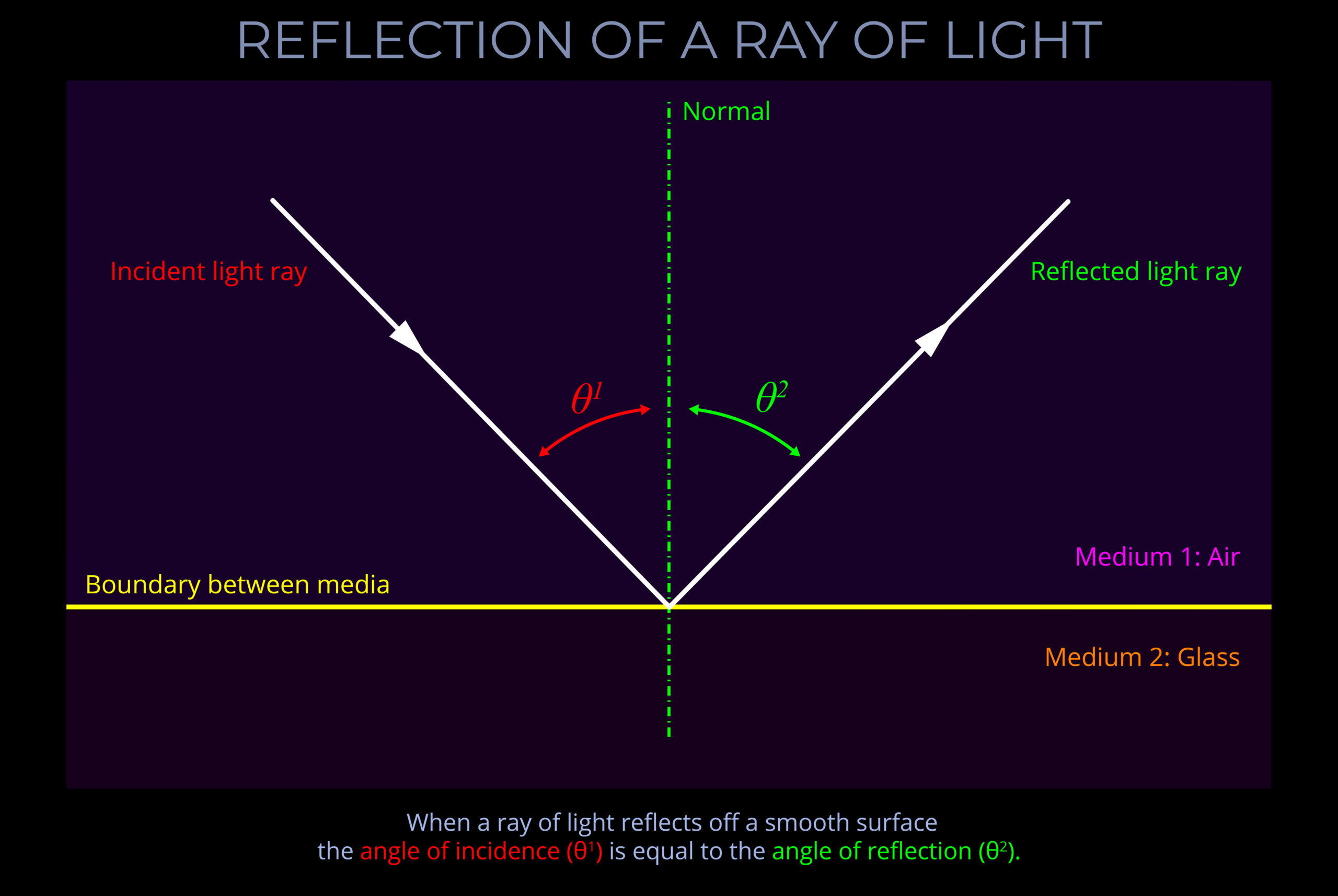Objects with smooth surfaces produce specular (mirror-like) reflections because light reflects off their surfaces at consistent angles.
About specular reflection
- All objects obey the law of reflection on a microscopic level.
- If the irregularities on the surface of an object are smaller than the wavelengths of incident light then reflected light travels away from the surface at consistent angles.
- When an observer looks at specular reflections (regular reflections), they see mirror-like images on the surface of an object.
About diffuse reflection
- If the irregularities on the surface of an object are larger than the wavelengths of the incident light, light reflects in all directions and produces diffuse reflections.
- A diffuse reflection is easily distinguished from the mirror-like qualities of a specular reflection.
- Diffuse reflection is responsible for the way we perceive the colours and textures of objects.
- The combination of specular and diffuse reflections determines the overall appearance of objects in terms of shininess, dullness, or roughness.
